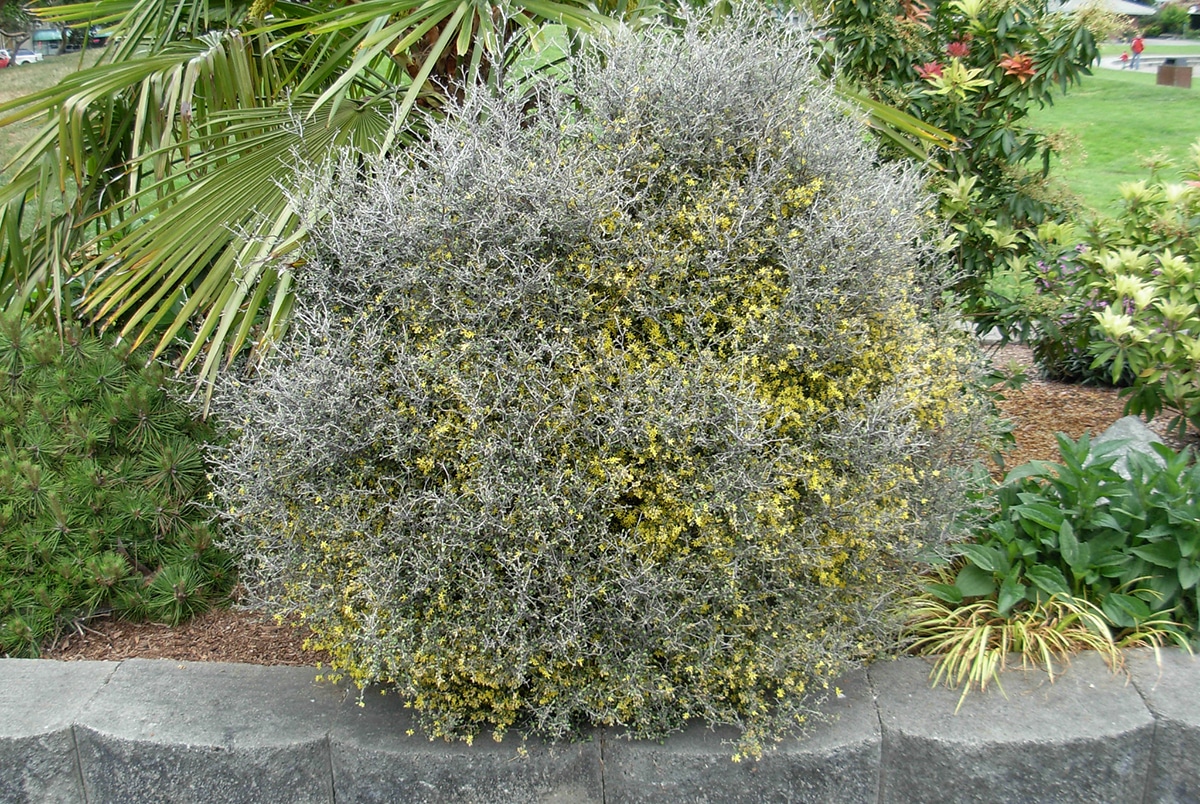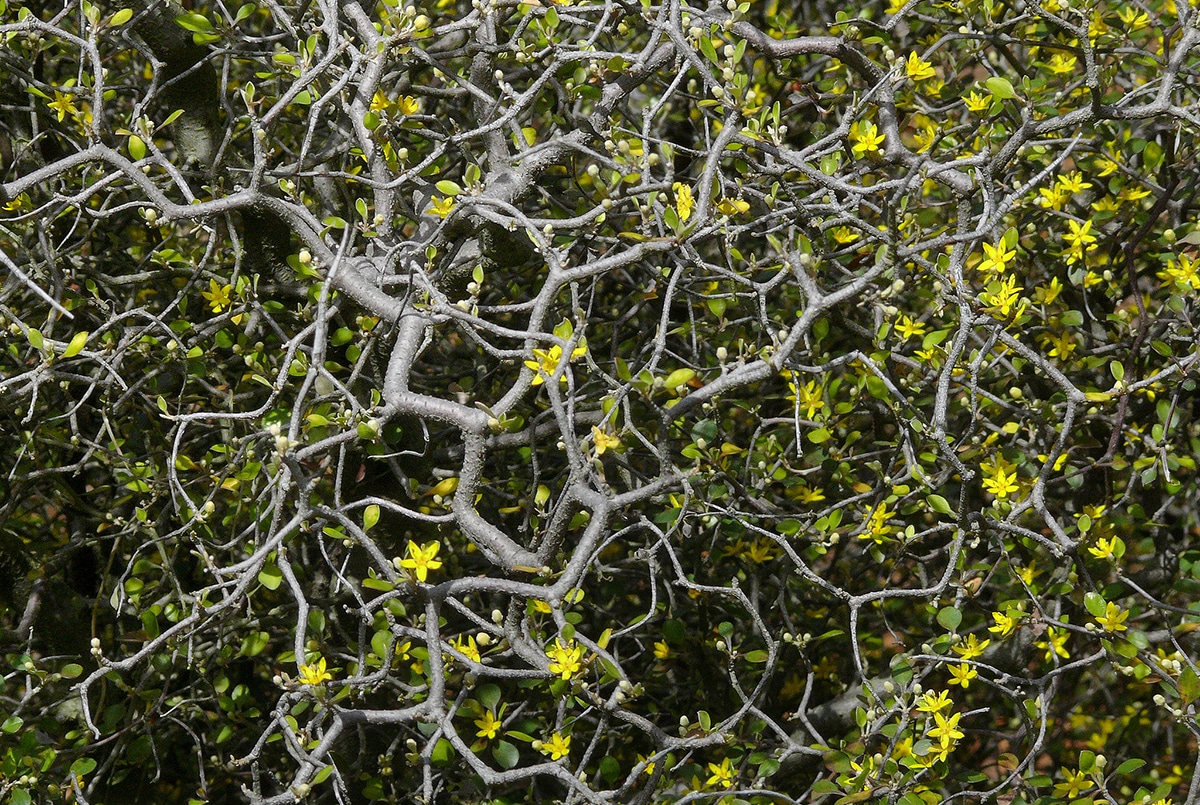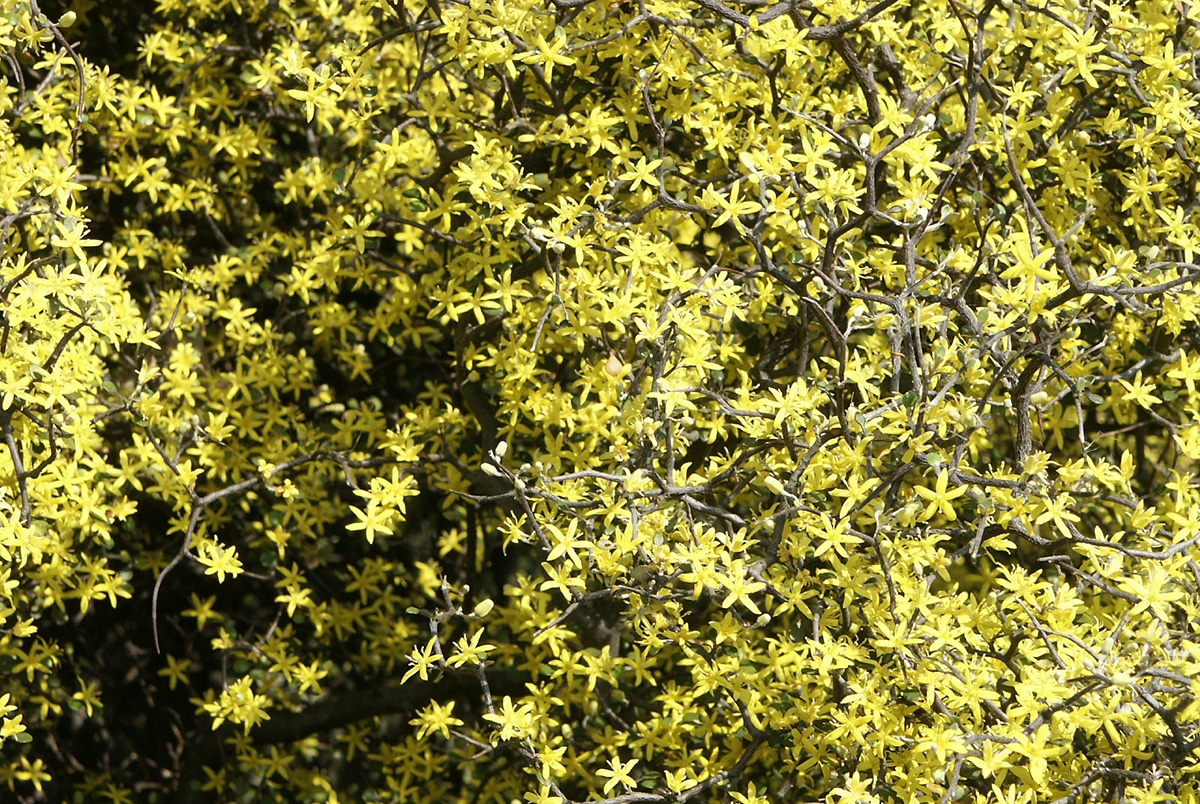
When decorating gardens or parks, not only the beautiful colored flowers stand out, but also a wide variety of shrubs, among others. One is especially peculiar because of its striking shape, which is why it is known as a wire mesh shrub. It's about gender Corokia, which we will talk about in this article.
Specifically, we will explain what it is, which are the most popular species and what care it requires. I hope you find this information useful and interesting.
What is the Corokia?

Also known as the wire mesh shrub, the Corokia is a genus of plants in the family Argophyllaceae, a native of New Zealand. It is a shrub or small tree that often has a natural bonsai shape. The leaves are dark green and oval, and the flowers are small and yellow in color. As for the fruits, they are small and round, dark brown in color. This vegetable is commonly used in gardens and landscaping as a border plant or as a container plant. It is drought hardy and tolerant of very windy conditions, but requires well-drained soil.
As we have already mentioned above, the wire mesh shrub is native to New Zealand. We can find it throughout the North Island and the South Island, in most cases in mountainous places and in coastal areas. It thrives in a variety of soils and conditions, from humid forests to rocky slopes and exposed coastal areas. some species of Corokia they are also found in Australia and on some Pacific islands. Nevertheless, It is important to mention that its natural distribution is limited and most of the time it is cultivated as an ornamental plant.
This plant is also known by other names, including the following:
- Cotoneaster: It is one of the most common names, since the genus Corokia It is also known as cotoneaster and there is a species of this genus that is called that (we will discuss it later).
- Corokia virgata: This is another common name for the genus Corokia, especially for the species Corokia virgata.
- Wire netting bush: It is a common name given to some species of Corokia due to its wire texture and appearance.
- New Zealand cotoneaster: This is another common name for the genus Corokia, since it is native to New Zealand.
Species
There are several species of CorokiaSome of the most popular being the following:
- Corokia cotoneaster: It is one of the most common species and is known for its natural bonsai form. It has dark green leaves and small yellow flowers.
- Corokia virgata: Also known as "green twig corokia", it is a species that has green leaves and yellow flowers. It is very resistant to wind and is commonly used in gardens and landscaping.
- Corokia buddleioides: This species is known as "bay leaf corokia". It has dark green leaves and small yellow flowers. It is a low growing plant and is commonly used as a border plant or container plant.
- Corokia geentyi: It is a kind of evergreen shrub, with oval leaves and yellow flowers. It is native to New Zealand and is wind resistant.
- Corokia frosted chocolate: It is a cultivated variety of Corokia cotoneaster, with chocolate brown leaves (hence its name) and yellow flowers.
Caring for the Corokia

The care of the wire mesh shrub is quite simple, since It is a resistant plant and tolerant to adverse conditions. However, there are some important things to keep in mind to ensure that this vegetable thrives correctly:
- Sunlight: La Corokia prefers a location in full sun to partial light, but can tolerate a location in partial shade as well.
- Irrigation: This plant is resistant to drought, so it does not require frequent watering. However, it is important to ensure that you do not let the soil dry out completely, especially during prolonged periods of heat and dryness.
- Ground: As for the soil, this vegetable needs it to be well drained, since it does not tolerate wet and waterlogged soils. It is advisable to mix the garden soil with an equal amount of sand or gravel to improve drainage.
- Pruning: The wire mesh shrub can be pruned to shape or to keep it within the desired size. It is advisable to carry out this task after flowering to avoid the loss of flowers.
- Fertilizer: It is not necessary to fertilize frequently this vegetable, unless it is growing in poor soil or is not growing well. In this case, it is best to use a fertilizer slow release organic or chemical.
- Plagues and diseases: Usually, the Corokia it is resistant to diseases and pests, but it is important to keep an eye on it and treat any problems that may appear as soon as possible.
As you can see, the wire mesh bush is a highly aesthetic and easy-care plant. What more can we ask for?